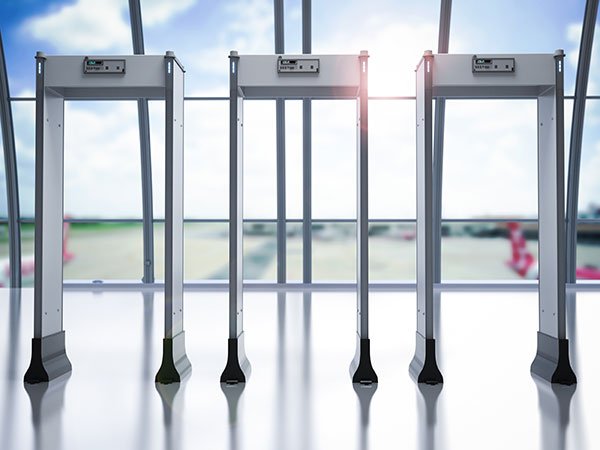SECURITY
SECURITY FRAMEWORK UNVEILED: A STEP-BY-STEP GUIDE TO IMPLEMENTING METAL DETECTORS
Learn how to protect your building while maintaining smooth foot traffic flow with our comprehensive metal detector implementation guide.
Implementing metal detectors is an effective measure to deter potential threats, but it can also create bottlenecks and inconvenience for foot traffic. Follow our step-by-step security framework that will guide you in successfully implementing metal detectors while optimizing foot traffic flow for a safer and more efficient environment.
STEP 1: SECURITY ASSESSMENT
Conduct a thorough security assessment of your building to identify vulnerable areas and potential risks. Understand the layout, traffic patterns, and entry points to determine the optimal locations for metal detector placement.
STEP 2: CHOOSE THE RIGHT METAL DETECTORS
Select modern metal detectors equipped with advanced technology that offers high sensitivity and minimizes false alarms. The right choice ensures accurate screening without causing unnecessary delays.
STEP 3: STRATEGIC PLACEMENT
Strategically position metal detectors at key entrances to facilitate a smooth flow of foot traffic. Analyze visitor traffic patterns and consider crowd distribution to optimize their placement.
STEP 4: MULTIPLE ENTRY POINTS
If possible, establish multiple entry points with metal detectors to distribute the screening load evenly. This prevents congestion and ensures efficient processing of attendees.
STEP 5: TRAINING SECURITY PERSONNEL
Ensure your security personnel are well-trained to operate metal detectors efficiently. Friendly and professional staff can expedite the screening process and create a positive experience for visitors.
STEP 6: UTILIZE QUEUE MANAGEMENT
Implement queue management systems to organize the flow of people waiting for screening. Display clear instructions and estimated wait times to keep attendees informed and reduce perceived waiting periods.
STEP 7: EXPRESS LANES FOR EFFICIENCY
Designate express lanes for attendees without bags or large items. This allows individuals with minimal security risk to pass through quickly, freeing up resources for thorough inspections where necessary.
STEP 8: INTEGRATE TECHNOLOGY
Integrate metal detectors with access control systems or ticket scanners for seamless processing. This integration helps manage access to the building efficiently while enhancing overall security.
STEP 9: PRE-EVENT COMMUNICATION
Effectively communicate security measures to attendees before the event. Transparent communication sets expectations and reduces frustration during the screening process.
STEP 10: PERIODIC REVIEW AND ADAPTATION
Regularly review the effectiveness of your metal detector implementation and make necessary adjustments. Learn from each event to enhance security measures and improve foot traffic flow over time.
By following this step-by-step security framework, business owners and building managers can successfully implement metal detectors while optimizing foot traffic flow. Prioritizing safety without compromising convenience creates a secure and positive environment for everyone involved.
Safeguard your building with efficient metal detector implementation. Learn how to protect your premises and maintain smooth foot traffic flow with our comprehensive guide by calling our team at Creatus Corporation. Secure your space today!


